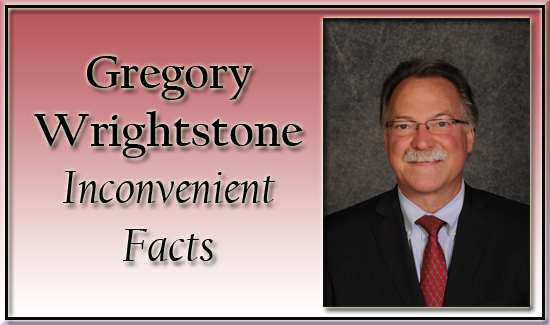Mega-Drought or Mega-Propaganda?

For some seeking attention — or possibly grant money — bad news can never be bad enough without adding a bit of global-warming hysteria.
The southwestern United States is undergoing one of its worst droughts in 1,200 years and it is being made worse by man-made climate change. So says a new study released in the journal Science. According to authors from the Lamont-Doherty Earth Observatory and other esteemed institutions, including Columbia University, the 19-year period (2000 to 2018) is marked by an historic mega drought.
The study’s conclusions were widely and uncritically trumpeted by the media with bold headlines such as Climate change: US megadrought ‘already under way’and ‘Megadrought’ emerging in the western US might be worse than any in 1,200 years.
The study was based on tree-ring data and was evidenced, according to the authors, by reduced snowpack, increased fire activity and reduced vegetation. Of particular interest, the authors stated flatly that this mega drought was “still ongoing as of 2020.” What does the data tell us about these conclusions?
You will note that the study ended in 2018, and probably for good reason. The data since that time pours cold water (pun intended) on this supposed horrific drought driven by man-made warming.
The National Drought Mitigation Center of the University of Nebraska-Lincoln is the go-to source for drought information for the United States and the data there is not supportive at all of the dire claims made in the study. Looking at the continental U. S., the area in drought of any kind is at nearly the lowest percentage (figure 1) since they began record keeping. Since early 2019, severe drought (figure 2) has been well under one per cent of the area of the continental US, and you have to search really hard to find that tiny area (hint: it is in the Delmarva peninsula on the east coast.) Amazingly, the area in the Southwest that the Lamont study claimed to be in decadal mega drought had zero area in drought as of January of this year. That’s correct, zero.

Figure 1 – United States Drought Monitor

Figure 2 – United States Drought Monitor Area in Drought
The authors pointed to increasing fire frequency linked to drought and, based on media coverage of the wildfires in the western states, that would seem to be the case. The facts say otherwise. According to the National Interagency Fire Center, the number of fires in the United States have been in a long-term significant decline, falling from more than 200,000 acres in the first half of the 20thcentury to around 65,000 recently. Even in California, CalFire reports that the number of fires have declined by almost 50% over the last several decades.
The authors rightly state that the area has been plagued by recurring cyclic droughts over the last one thousand-plus years, but then draw on the hysteria of supposed human-driven warming to further dramatize the recent dry period.
“The atmosphere and ocean anomalies that drove past megadroughts very likely dwarfed those that occurred during 2000–2018, but superposition of the 2000–2018 climate dynamics on background anthropogenic soil drying put an otherwise moderately severe soil-moisture drought onto a trajectory characteristic of the megadroughts of 800–1600 CE.”
A previous study by E. R. Cook and others (2007) took a look at droughts dating to the year 800 AD (Figure 3) and found that southwestern North America has experienced much worse droughts that were catastrophically bad, some lasting more than 200 years. One of these events culminated in the 12th century and is the likely cause of the dramatic collapse of the Anasazi culture.

Figure 3 – 2007 E R Cook Long-term aridity changes in the West
There is certainly no doubt that the southwest of the United States experienced a severe drought in the period 2000 to 2018, but this study uses cherry picked data that end in 2018, just as the drought itself was ending. Knowing full well that the dry period had ended more than a year prior to the time of publication, the authors still maintained the it was “ongoing as of 2020.” This is yet one more example of the willful abuse of science in order to further a state of fear concerning supposed man-made climate change.

This commentary and analysis was first published at BizPacReview on May 5, 2020
Gregory Wrightstone is a geologist and author of the bestselling book, Inconvenient Facts: The science that Al Gore doesn’t want you to know. As a strong proponent of the scientific process, Gregory is a leading voice in the large and growing climate change skeptic community. Among his many qualifications, including advanced degrees in geology, he was recently added as an Expert Reviewer for the Intergovernmental Panel on Climate Change (AR6).






